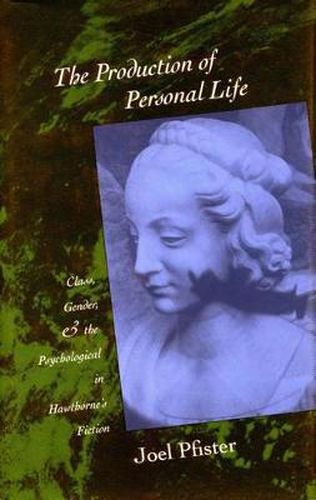Readings Newsletter
Become a Readings Member to make your shopping experience even easier.
Sign in or sign up for free!
You’re not far away from qualifying for FREE standard shipping within Australia
You’ve qualified for FREE standard shipping within Australia
The cart is loading…






This book aims both to demystify and to reconstitute ‘Hawthorne’ as an object of study by rereading Hawthorne’s fictions, mainly those from the early 1840’s to 1860, in the context of the emergence of a distinctively middle-class personal life (the domestic emotional revolution that accompanied the industrial revolution. Recent histories of middle-class private life, gender, the body, and sexuality now enable us to bring a more encompassing grasp of history to our reading of the ‘psychological’ in Hawthorne’s writing. Rather than taking the conventional view that Freud explains Hawthorne’s psychological themes, the author draws on the history of personal life to suggest that mid-century psychological fictions help, historically, to account for the surfacing of a bourgeois Freadian discourse later in the century. The production of Personal Life also asks why it was that women in mid-century fiction, especially that written by men, were represented as psycholgical targets of male monomaniacs in the home. By connecting the enforcement of middle-class ‘feminine’ roles to psychological tension between the sexes, Hawthorne’s fiction at times implicitly critiques the sentimental construction of gender roles on which the economic and cultural ascendancy of his class relied.<
$9.00 standard shipping within Australia
FREE standard shipping within Australia for orders over $100.00
Express & International shipping calculated at checkout
This book aims both to demystify and to reconstitute ‘Hawthorne’ as an object of study by rereading Hawthorne’s fictions, mainly those from the early 1840’s to 1860, in the context of the emergence of a distinctively middle-class personal life (the domestic emotional revolution that accompanied the industrial revolution. Recent histories of middle-class private life, gender, the body, and sexuality now enable us to bring a more encompassing grasp of history to our reading of the ‘psychological’ in Hawthorne’s writing. Rather than taking the conventional view that Freud explains Hawthorne’s psychological themes, the author draws on the history of personal life to suggest that mid-century psychological fictions help, historically, to account for the surfacing of a bourgeois Freadian discourse later in the century. The production of Personal Life also asks why it was that women in mid-century fiction, especially that written by men, were represented as psycholgical targets of male monomaniacs in the home. By connecting the enforcement of middle-class ‘feminine’ roles to psychological tension between the sexes, Hawthorne’s fiction at times implicitly critiques the sentimental construction of gender roles on which the economic and cultural ascendancy of his class relied.<